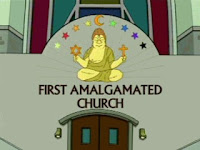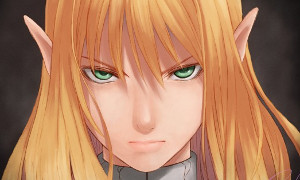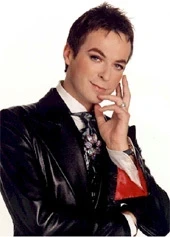 |
| Oh, good. A post about economics. |
One of the top topics for campaign designers is that of economics in the game world. I've suggested elsewhere that AD&D isn't the right game for this, as there are some design goals which are fundamentally incompatible with a realistic economy. However, that just means that DMs have set about rebuilding the AD&D economy from scratch.
To me, the only real purpose of this (beyond the enjoyment of the DM) is to give players a way of relating to the cost of things. If a new player's character picks up a gem in game and is told (by some passing dwarf) that it's worth 700gp, what generally happens is that the player then says "is that a lot?"
More experienced players are a bit more apt to translate "700xp" into "2% of my next level" and be happy with that, but metagaming the economy like that doesn't satisfy the world-builder in all of us.
So, answering the question "is that a lot?" leads us off down the path of economics and that path can end up in some very strange places. One such place is
The Tao of D&D, a blog which has over the years detailed the author's attempts to build a consistent economy as opposed to a realistic one - a wise choice in my view - and also to this weirdo post here where I look at the questions of "what does 'rich' mean?" and "why is the Middle East so bloody important?". The relation to D&D specifically is about zero, but I think there is some interesting stuff for the campaign designer to think about. Maybe not, but I've not got anything else ready so it'll have to do.
Kings and Things
Richard the Lionheart once had a ransom paid for his release which came to something like 6 tons of silver (100,000 marks or £66,666). If we simply convert that into the value of an equal weight of silver today it would be about £16m and in AD&D terms it is 438,857gp.
The AD&D term is a lot of gold; the modern value isn't a lot for a king. It's certainly not representative of what £67k was worth in 1194 (the deadline for payment). Or is it?
In fact, if you are reading this blog, it's fairly certain that you are far richer than old Richard was. The £16m figure is actually probably too high and the reasons for this are of some interest when trying to think about the value of money in a campaign. So what does it mean to be rich?
All economics, at the very bottom, boils down to the question of how much work a person can "command", that is to say in physical terms how much energy they can use in their life to do things that they want done. And the very first chunk of that energy is what is used to keep the person alive, followed by any children they may have who are dependant on them.
 |
| Early Yuppies |
In a society where no one manages to get beyond this basic level - probably a society that humans have not had for maybe a million years or more - then the concept of wealth comes down to things that are inherent in ones own body - essentially physical strength. The best hunter has the most energetic diet and is by that standard the richest member of the tribe or family.
What our king of the veldt has is more calories at his disposal than the other members of the society. What he needs to express this wealth is a way in which to transfer those calories outside of himself; a way to exploit the excess energy in his diet to improve his life. For our beefy
Homo ergaster, that probably meant bullying smaller people into doing things for him, including of course having sex and perhaps cooking meals - the origins of married life! More seriously, the beginnings of what would become mediaeval society with the rich at the top with mistresses and large families of bastards and whole houses filled with servants.
Anyway. The point is that wealth resides in that ability to get your work done for you. In the tribes of 1m years B.C., that meant exploiting the 1500 or so calories that your companions generated per day (they were smaller, so I'm guessing on the 1500 figure). The total wealth of the tribe is basically 1500 units minus some value needed for simply living times the number of members (don't carp - I know there are lots of little corrections to this figure). That's pretty limited and you can perhaps see where I'm going with this when I say that the computer I'm typing on now is doing than 1½ times that 1500 figure for me per day even when idling.
At one point ancient humans seem to have gone down two routes to solve this limitation on energy production. One was a pretty common evolutionary strategy, one which the dinosaurs are probably the best know exponent of - size. Big, heavy with massive jaws and jaw muscles to allow more calories to be extracted from the environment.
 |
| Extinct. But happy. |
The alternative evolutionary path was trod by our ancestors who developed larger brains which could think about how to get more energy instead of simply beating it out of the world around them. For whatever reason the environment changed and the big-jaws flopped and the big-brains made the first truly unique human break-through by working out how to make and use fire.
Fire allowed energy to be harvested from trees - a foodstuff previously of very little interest to humans. Fire released energy to keep us warm, meaning we didn't have to simply huddle in a cave or whatever and we could go into new lands away from our tropical home, but more importantly it could be used to breakdown cell walls in food without using chemical energy drawn from our own reserves. That meant that we could be more active after eating and have less of our bodies devoted to digestion. The evolutionary pressure was now on to find better things to do with the energy we had saved and the answer to that for the next million years and more was "stick it in the brain".
Talk About Slaves
As brain size increased, at some point verbal communication became a viable means to express abstract concepts that had been limited to those that could be mimed in some way. That meant several things were now introduced into the human world including giving orders, lying, and expressing moral judgements. In other words, religion and slavery became much more practical.
 |
| Entertaining and nutritious too! |
Slaves were probably around before this in the form of captured members of other tribes (still quite a common feature of life in primitive cultures today). But language and the ability to give orders makes a slave into a much more useful tool and the value of them must have greatly increased. A slave represents another source of work which the owner does not have to do for themselves and, in extreme cases, may not even have to be properly fed. Owning slaves has been a major sign of wealth for much of human history for the simple reason that a slave is wealth in a much more real way than a gold coin is (Roman law recognized this fact in its terminology so that gold was a minor possession and a slave a major one). If times get
really hard, you could always eat a slave while a gold coin is of no use to you!
 |
| "OK, too much fire now!" |
So, fire probably allowed true specialists for the first time - people who could do something other than nurse or hunt. In some cases these were simply the elderly and the handicapped but I'd give good odds that the first priests appeared at this time and that they were priests of fire deities or spirits (I'm also sure that there was religion before this but I'm not sure that a priestly class could have had a permanent fixture in human society). We probably also got our first kings too. These specialists existed simply on the energy of others and what could be produced by fire from wood and as brains improved in a virtuous circle with new ways of harnessing fire we eventually arrived at the next big step up in the energy game: agriculture.
Farming is a concerted effort to gather solar energy and convert it into something we can use for work. Both crops and animals are raised to give food which is used to power workers who build things, design things, even write things down, all in a pyramid of power with the most specialized (and least physically exerted) at the top. Indeed, pyramids seem to have been a feature of this stage of development.
If we stop here and have a look at a member of the Egyptian nobility, say, we can have a look at his or her sources of wealth. There's the food produced on the aristocrat's land for a start. The energy generated by the workers has gone up since
Homo ergaster to something like 2200 calories per male worker. Whereas King Ergaster could only command the energy of whoever he could reach, Lord Gypo has hundreds of people to work his fields, and the profit from those fields (meaning the calorie value of the crop minus what the farmers have to be given to allow them to live) in addition. This profit, in the form of grain and meat, can be given to other people as payment which in turn frees them from having to go and work their fields (or own any fields at all) or used to support slaves to waft cold breezes across the lord's brow on hot days. So how wealthy is the Egyptian lord compared to you or me? The answer is that we're probably better off because of something that happened just before the death of Richard I.
Up to this point (12th century), almost all energy was derived from what came in from the sun on a daily basis. There was some buffering in the form of forests and grain storage but forests could not be harvested faster than they would grow and grain would not keep for years in barns so, although there were reserves that could be dipped into if needed the annual energy production of the human race was based pretty strictly on what proportion of that year's solar output it had captured. This is most obviously seen in the close correlation between bad weather and poor harvests and starvation in the period, which was a global pattern only slightly alleviated by the limited international shipping capabilities of the time.
But back, many millions of years before King Ergaster first beat up a smaller tribe-member for the nice joint of meat he was eating, the sun had shone down upon the Earth and that energy was captured and some of it, a small proportion, was stored away.
 |
| "So, you chaps are all dwarves, eh?" |
In 1199 the king granted a charter for the extraction of this energy in Newcastle Upon Tyne, in the form of coal. Some coal exploitation had been made before this and it would take a few centuries for technology to get to the point where it could be used on a large scale but once it did we hit another virtuous circle where the extraction of coal released more energy, allowing more and more clever humans to be freed from manual work and go to university and discover better ways to extract more coal and so on. The Industrial Revolution had arrived. Coal production in England went from 2.7 million tons in 1700 to 10 million tons in 1800 and 250 million tons in 1900.
All the way down our history, increases in available energy were accompanied by increases in population - the additional energy was quite literally used to make more people - and the Industrial Revolution was no exception.
From 1801 to 1901 the population of Great Britain and Ireland went up by a factor of x2½, while the energy extracted from coal went up by x92½. Assuming that agricultural production increased linearly with population (which is not true, but in the end it doesn't matter), this means that the average British person had 37 times more energy available to them in 1901 than in 1801. Or, to put it another way, they were 37 times richer and things were about to go even wilder as, in 1899, oil came on the scene.
Today, Britain's 65m people consume about 35 million calories (in the dieting sense of the word) each per year in the form of energy which has not derived from the year's sunshine (ie, oil, gas, nuclear etc.) for every man, woman, and child.
So, how rich am I? I have the equivalent of 44 adult male slaves working for me day and night (and so does my wife, and so would any children we had*). If I had to employ them at average wages they'd cost me a bit more than a million pounds per year. Even if I subtract what I pay for all that energy, I can assure you that I'm quids in. Very few Roman nobles would have had this number of slaves and even if they did, they still would not have had any way of travelling from Rome to London in an afternoon, so even that million quid doesn't actually reflect the value of these imaginary slaves.
*[edit: this would mean that the UK would have 2.9 billion slaves wandering about doing what we use machines and oil/coal/nuclear for!]
One reason that slavery died out in advanced nations is that technology does the same work without all that messing about with feeding and housing them, not to mention the risk of rebellion. Once there was a feasible alternative weakening the ruling class's dependence on slave, the moral pressure was able to push through the abolition, which is unlikely in the extreme to have succeeded in, say, 1607 compared to 1807. In America, where large parts of the nation were very technologically backward compared to, for example, New York, abolition had to wait a bit longer and in modern India and China the practice continues under various guises as rock-bottom housing and food costs continue to make slaves more economical than even quite basic machines. Once that changes, the moral argument will magically become important to the ruling elites.
How Things Have Changed
Back to the main feature: This figure gives some idea of how wealthy people like Bill Gates are today compared to Pharaohs and the "Emperors" of the Middle Ages. It also gives some impression of how difficult it is to compare modern prices to old ones. It's not just that some things are easier to make or do now because of technology, but that
everything is cheaper, especially food.
 |
| Better dying through chemistry |
What made aristocrats powerful was their control of the energy supply in the form of agriculture. They were the landowners and they had a stranglehold on the means of feeding the population. The reason the British aristocracy lost its grip on power in the early 20th century was that the relative importance of food as an energy source was becoming lower and lower and the World Wars simply demonstrated how important chemical energy had become by blowing millions of people to bits with it. In the face of what could be done with the output of an oil well in Persia, owning a lot of fields in Kent simply didn't cut it anymore and real political power shifted to those who controled oil and gas supplies, where it remains today.
In fact, the number of calories which we consume from modern food is greatly outweighed by the number of calories - derived from fossil fuels - which goes into its production, in the "West" at least. So agriculture is marginalized even more as what we have of it would wither without the oil industry.
Almost Time to Shut Up
Against that sort of background, it's impossible to compare an agrarian fantasy game setting's economy with ours in any sensible way. We can't even really look at real-world historical economies and use them because our games have magic, including cure disease and, presumably, NPC spellcasters throwing "bless crop" around the place too. An on top of that, there's probably a few strange creatures knocking about that make a difference too. A pair of stone giants could radically transform the economics of a town if they hired themselves out for pay, and animated dead or statues even moreso as they won't want paying.
Given all this, I think the best advice is to forget "realism" completely and pick a number to represent the conversion from game currency to modern real currency and then just think to yourself "how big a purchase should that be" or, more usefully "how big a purchase do I
want that to be?" If you make a mistake, then invent a reason why the price seems different; magic being the fall back for everything.
Why are gems so valuable in AD&D? There was an ancient war of wizards who used gemstones to power Über spells and they actually consumed major proportions of the available gems. Why are bows so expensive? Ents make it too dangerous to harvest the high quality trees needed for the best bows. Yadda yadda yadda.
 |
| About 7sp in Old Money |
As an example of a figure for conversion, I suggest taking what you think is a minimum wage per year and working from there. So, if you say that £12,000 is an absolute minimum modern wage and you want the poorest hirelings to be asking for a gp per month, then 1gp=£1000, 1sp=£50, and a cp is a fiver. Player wants to buy a small horse buggy? A Fiat 500 is about 9 grand, so that's 9gp. Want a posh carriage with all the trimings? A Rolls Royce will set you back in the region of £200-300k, so 200 to 300gp. Nice house? 250gp. Mansion maybe a few thousand gp. Meal for two at a cheap place? 3cp At a really fancy place? 2 or more sp.
You get the idea. [edit: just for the record, I use a figure of 1gp=£100, 1sp=£5, 1cp=50p but it really is a matter of taste]
Consistency is good, but realism is impossible and probably not worthwhile even if you could manage it, so don't waste time chasing it. You could divide this ratio by 10 and not worry about it. Who cares if a gold piece is worth only £100? or £50? The point is to give you some consistent basis for comparing items, even if the relative costs are almost certainly screwy compared to what they were in a Middle Ages which had no magic.
Assuming that you even want to bother, of course. Just using the book prices is probably not going to annoy anyone who's having fun fighting the evil queen and rescuing the handsome Prince.













 The badgers are vampiric and each point of damage done by their bite (the 1-3 damage attack) restores them by the same amount (to a maximum of 10hp). Anyone killed by the badgers becomes a badger like them if the body is not buried in holy ground by the next full moon.
The badgers are vampiric and each point of damage done by their bite (the 1-3 damage attack) restores them by the same amount (to a maximum of 10hp). Anyone killed by the badgers becomes a badger like them if the body is not buried in holy ground by the next full moon.





















